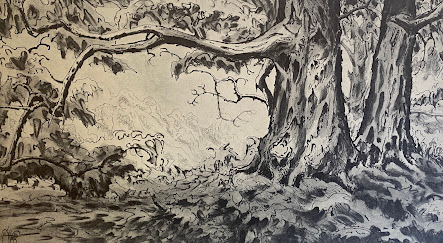CHARLES E. BURCHFIELD
Tuesday, June 18, 2024
THE THREE TREES
Tuesday, June 4, 2024
FRAGONARD'S DRAWINGS OF TREES
JEAN HONORÉ FRAGONARD
Foliage Study: Branches of a Chestnut Tree 1765
In October of 2016 we saw a show of Fragonard's landscape drawings at The Metropolitan Museum of Art in New York City. I took many photos of his drawings of trees. He was such a master of observational drawing. About this drawing of a Chestnut: "This sheet records the branches of a Chestnut Tree heavy with leaves and nuts. The study was likely inspired by the instruction of Charles Joseph Natoire, director of the Académie de France in Rome, who emphasized the importance of directly observing nature. In Fragonard's studies of individual trees or masses of foliage he was less interested in rendering botanical accuracy than in capturing the effects of light and the textures of leaves with stylized strokes of red chalk." chalk. https://metmuseum.org/art/collection/search/655390







